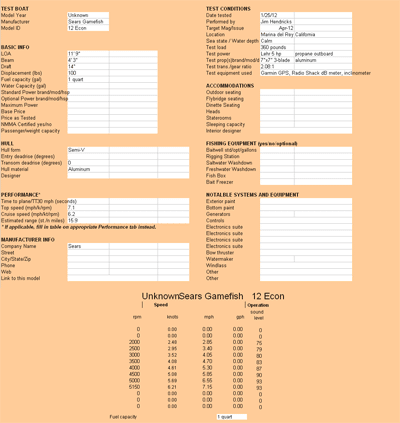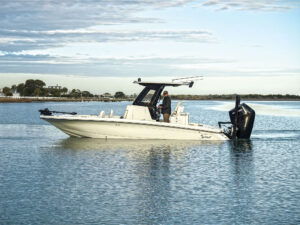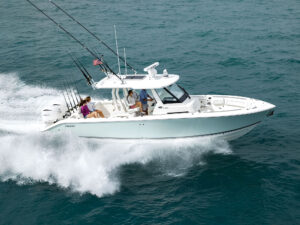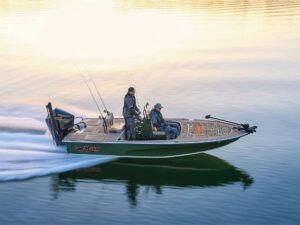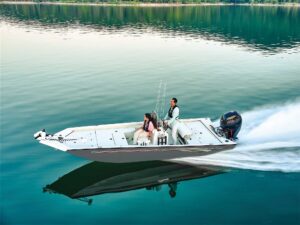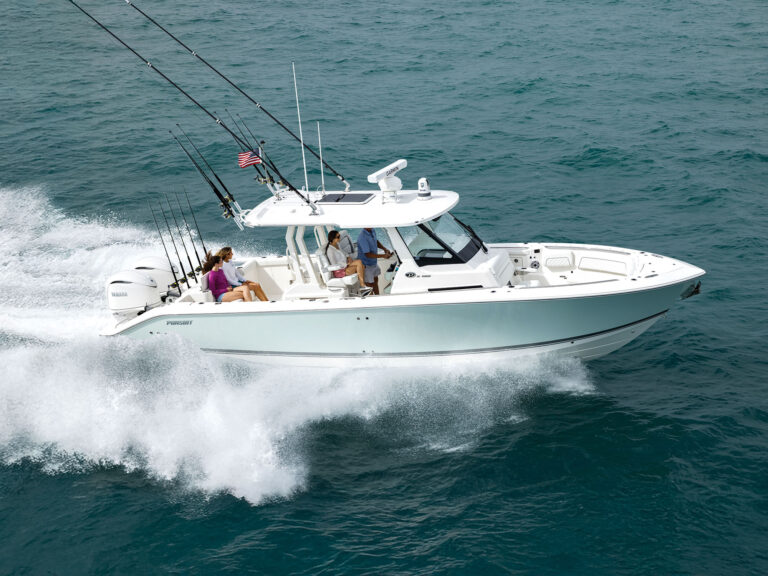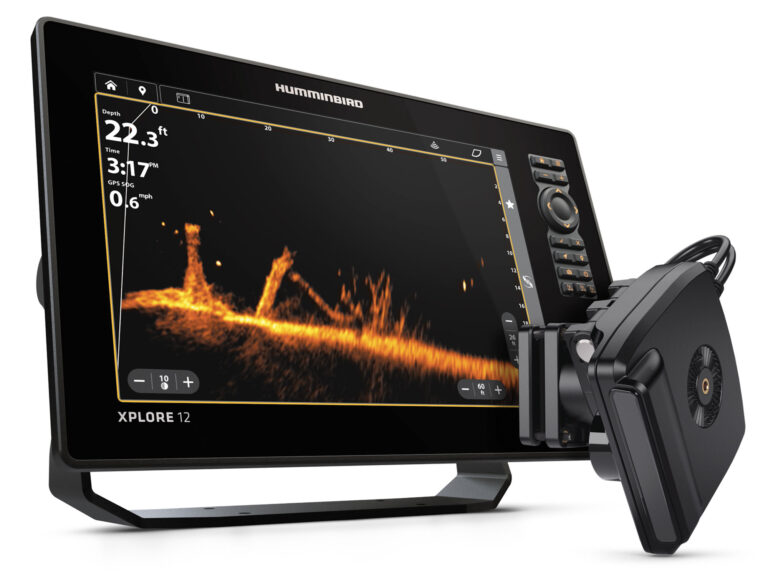The new 2.5 hp and 5 hp outboards from Lehr (golehr.com) run on the same fuel your barbecue does. Not charcoal, but propane. You can hook up one to the same propane tank you have on the grill, or you can pop in a 16.4-ounce Coleman-style cylinder.
We had the exclusive opportunity to run these four-stroke outboards in Marina del Rey, California, near the company’s Los Angeles headquarters. While the horsepower ratings are slight, the prospect of marine engines running on propane — also known as LPG (liquified petroleum gas) — is intriguing.
Before we go there, let’s look at how these little outboards faired in our tests. First, on cold starts, they fired up with one pull of the manual rope start.
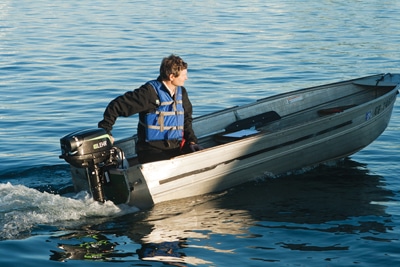
Lehr founder and CEO Bernardo Herzer, whose zeal is reminiscent of Preston Tucker’s, is a prophet of propane. He firmly believes that this hydrocarbon is the fuel of the future. His company has previously designed and built a number of LPG-powered lawn mowers, mo-peds, go-carts, portable generators and more.
Herzer reminded us that LPG is gaseous at room temperature, so there is no need for a carburetor or other system to vaporize a liquid fuel such as gasoline. It also eliminates the need to prime or choke the engine.
“A patented fuel metering system delivers propane at a regulated pressure to the combustion chamber,” Herzer said. “Because the fuel vaporizes on its own, it is impossible to flood the engine or foul the spark plugs.”
There was virtually no warm-up needed. Even when cold, the outboards refused to bog under hard acceleration. Of course, with these wee outboards, acceleration is a relative term. Pushing two crew members in a 12-foot Sears Gamefisher aluminum boat, it took the 5 hp model nearly 10 seconds to reach its top speed of 7 mph. Running it single-handed, we were able to push it to 9 mph.
Herzer claims that in a purpose-built engine, propane is more efficient than gasoline. This is because propane has a higher octane rating — about 104, according to our research. “Yet, that also means that the engine must be optimized to operate efficiently on propane.”
Part of this equation is a slightly higher compression ratio for LPG fuel. For example, Lehr’s 5 hp outboard has an 8.9:1 compression ratio versus 8.5:1 for a gasoline-powered Mercury 5 hp four-stroke.
While we did not have equipment to measure propane flow, Lehr vice president of engineering David Kostka shared his fuel consumption data. At 3,300 rpm, the 5 hp model burns pro-pane under load at a rate of 0.18 gph, Kostka said. At our speed of 4.5 mph at 3,300 rpm, that equates to an astonishing 24.3 mpg. As speed increases, mileage drops sharply. At 4,600 rpm, for example, the speed was 6.2 mph, and with Kostka’s burn rate of 0.5 gph, that equates to a more believable 3.1 mpg.

The 5 hp model has neutral, forward and reverse gears and carries a manufacturer’s suggested retail price of $1,919.99 for the 49.6-pound 15-inch version and $1,955.99 for the 52.8-pound 20-inch version. Lehr’s 2.5 hp engine (available in a 37.9-pound 15-inch model only) has just neutral and forward (spin the outboard around for reverse) and a suggested retail price of $1,199.99. Both models carry three-year limited warranties and California Air Resources Board three-star ultralow emissions ratings. Propane burns cleaner than gasoline, producing fewer emissions.
Are more powerful Lehr propane outboards in the offing? “We do have bigger outboards in development,” Herzer said.
What of the perception that propane is explosive? “It’s in a sealed system,” Herzer responded. “There are no vapors, so it’s very safe.”
A check of residential propane prices at press time revealed a wide fluctuation ranging from $1.35 to $5.09 per gallon. Most hovered around $2.50 per gallon.
Propane Pros 1. Water can’t get in the tank. 2. It weighs 37 percent less than gasoline. 3. There’s less pollution. 4. Propane does not degrade.
Propane Cons 1. Fuel system must be sealed. 2. Try finding LPG at a gas dock.
Suggested Reading Propane Power
Lehr 2.5 hp Outboard Performance
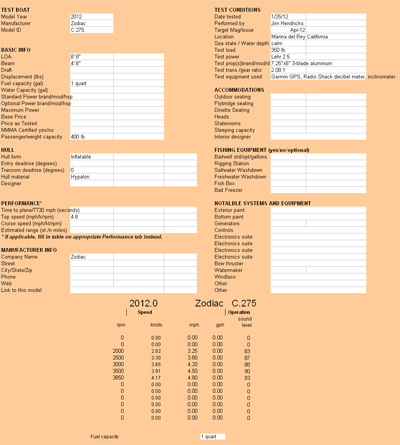
Lehr 5 hp Outboard Performance
